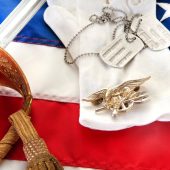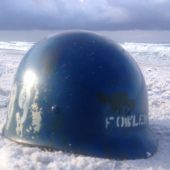As World War II raged, the need for a specialized unit to handle underwater demolition became apparent. This led to the formation of U D T, also known as Underwater Demolition Teams, in 1943. Initially, it comprised just 30 men with an ironclad determination and nerves of steel.
And now, from those 30 fearless men of UDT, we now have Navy SEALs.
UDT Table of Contents:
- The Genesis of Underwater Demolition Teams (U D T)
- Evolution and Expansion of UDT Roles
- Notable Missions and Operations Involving U D T
- The Transition from UDT to Navy SEALs
- Legacy and Impact of UDT on Modern Special Forces
- FAQs in Relation to History of Underwater Demolition Teams U D T
Naval Combat Demolition Units – The Precursors to U D T
Before the creation of UDTs Naval Combat Demolition Units, they were served as precursors, and these brave souls set the stage for what would become one of the most respected military units globally.
They were known not only for their strength but also for their innovation in using available resources under challenging circumstances. Their resilience laid a solid foundation upon which UDTs were built.
Operation Torch – The Catalyst for UDT Formation
Influenced by Operation Torch during World War II, decision-makers saw that clearing obstacles from beaches could significantly impact amphibious operations' success rate. Thus came about Operation Torch, a catalyst propelling the formation process forward.
This proved instrumental in bringing forth these elite units that have since played crucial roles in countless missions worldwide—truly an example where necessity birthed invention.
Evolution and Expansion of UDT Roles
The roles of Underwater Demolition Teams (UDTs) started shifting post-World War II. The need for UDT roles to adapt was not an arbitrary decision but rather a critical requirement in light of the evolving nature of warfare.
From Demolition to Reconnaissance – Broadening Scope Post WWII
With peace following World War II, you'd think things would slow down for our brave divers. But, they were in for more surprises as their roles expanded beyond demolitions.
This transition began during the Korean War when UDTs served in over 150 missions. Their responsibilities evolved from clearing beach obstacles to including reconnaissance tasks and providing vital information about enemy positions and movements.
In this new role, these frogmen laid the groundwork for what was yet to come - the SEAL teams that we know today.
The Birth of Navy SEALs
In 1962 came another turning point with President Kennedy's push for special forces expansion amid Cold War tensions. The answer? Transitioning some UDT members into newly formed Navy SEAL teams.
Notable Missions and Operations Involving UDT
The Underwater Demolition Teams (UDT) played pivotal roles in numerous missions, leaving an indelible mark on military history. Their courage and resilience were particularly notable during the Vietnam War.
In this tumultuous period, over 200 operations bore witness to their bravery. One mission stands out due to its significance - Operation Neptune during the D-Day invasion. As part of this critical operation, UDT members worked tirelessly under enemy fire to clear obstacles for landing craft.
Their efforts contributed to the Allied victory in WWII, allowing for a successful amphibious assault and further successes. To understand more about these daring feats by our brave servicemen, you can explore UDT Missions During the Vietnam War.
This glimpse into UDT's illustrious past is akin to peering through a periscope at some of the most decisive moments in modern warfare. The men who made up these teams exemplified bravery and determination, inspiring future generations of special forces.
The Transition from U D T to Navy SEALs
As the Cold War chill swept across nations, a shift was stirring within the US military. The Underwater Demolition Teams (UDTs), known for their grit and precision in World War II and Korean War, were about to evolve.
The Influence of the Cold War on UDT Transformation
In 1962, as geopolitical tensions escalated, President Kennedy recognized the need for more specialized forces that could operate seamlessly on land and water. This marked the start of an evolution - the transition from UDT to Navy SEALs.
This transformation wasn't just a name change but also reflected an expanded scope of operations – unconventional warfare being key among them. The initial SEAL teams comprised existing UDT members who embraced this new role with zeal. In 1981, the UDT no longer referred to their team as UDT but as a SEAL Team, i.e., UDT 21 became SEAL Team 4. All the UDT and SEAL members wore the Navy Trident and were designated Naval Special Warfare operators. Frogs referred to themselves as SEALs and SEALs called themselves Frogmen.
Interestingly, although we talk about 'SEAL' today as if it's always been here, its formation is relatively recent. So next time you marvel at those courageous souls daring sea depths or enemy lines, remember - they owe much to their gritty predecessors - the brave men of UDT.
Legacy and Impact of UDT on Modern Special Forces
The legacy of Underwater Demolition Teams (UDT) runs deep in the veins of today's special forces. Over 2,000 brave men served in these squads, paving the way for modern military tactics.
Their unique training methods, refined through hard-earned experience, are still used by elite teams today. These pioneers showed us that physical prowess alone wasn't enough; they championed a blend of mental fortitude and technical expertise to get jobs done under pressure.
As we look at how UDT has shaped our current force structures, it's evident their influence extends beyond tactical applications. Their ethos - a commitment to excellence and unyielding teamwork - is as crucial now as it was back then.
This guiding philosophy forms the bedrock upon which contemporary special operations units stand tall. They may not bear the same name or face identical challenges, but rest assured that every SEAL team member carries forward a piece of that UDT heritage within them.
The impact on special forces, both at home and abroad, is immeasurable yet tangible when you see their successes unfold before your eyes.
FAQs about History of Underwater Demolition Teams U D T
What is the history of U D T?
The Underwater Demolition Teams (U D T) were born out of World War II, evolving from Naval Combat Demolition Units. They later expanded their roles post-war and eventually transitioned into what we know as Navy SEALs.
How many U D T teams were there?
The number varied over time, but at its peak during the Vietnam War, there were 21 active UDT teams.
What were the UDT teams in WW2?
The initial batch of Underwater Demolition Teams was formed in WWII to clear obstacles for amphibious landings. These brave men played a crucial role in operations like Operation Torch and Neptune.
When were the UDTs founded?
The first official Underwater Demolition Team was established by Draper Kauffman in 1943 during World War II.










